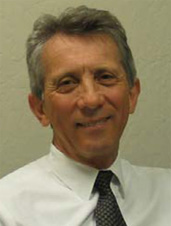Lehigh University
Office or Center Name Here
Jeremy Isenberg
PE, Past-President & CEO
Weidlinger Associates, Inc., New York, NY
Structural Design for Security—Past Accomplishments and Future Directions
click here to view video
Friday, March 14th, 2008
4:10 P.M.
Sinclair Laboratory Auditorium
Overview:
American response to the threat of terrorism began following the bombing in 1983 of the US Embassy and Marine Barracks in Beirut. The US Department of State instituted a program of structural hardening to protect US posts abroad. Starting with technical approaches that had been developed for Cold War threats, explosive testing and computational methods were adapted to identify and reduce hazards from chemical explosives of the type available to terrorists. Acts of terrorism within the United States, including the first World Trade Center bombing in 1993 and destruction of the Murrah Federal Building in Oklahoma City, prompted further technical developments that strived for protection while retaining architectural features including high ceilings, open sightlines and glass curtain walls. [...]
This lecture will trace the development of technology for protecting civilian structures against explosive threats and illustrate applications with examples from the open literature. Suggestions as to future directions will be offered.
DR. JEREMY ISENBERG: Dr. Isenberg received an undergraduate degree in Civil Engineering at Stanford University and PhD in Structural Engineering at the University of Cambridge, England, where he was a Fulbright Scholar.
Following service as a Lieutenant, Civil Engineer Corps, USNR, he began a consulting career in computational modeling of soil-structure interaction and structural response to explosions and earthquakes. His early work in computational plasticity and absorbing boundaries at Weidlinger Associates contributed to such projects as design of super-hard missile silos. He also advanced understanding of pipeline response to traveling seismic waves and fault offsets, undertaking a field experiment in which instrumented pipe segments were built across a strand of the San Andreas Fault. He is a licensed Professional or Civil Engineer in four states. He is the author of over 60 technical publications and recipient of several awards from ASCE, including the Ernest E. Howard and C. Martin Duke Awards and the Tewksbury Award of the ASCE Structural Engineering Institute (SEI). He is a past President of the Board of Governors of SEI. He was elected to the US National Academy of Engineering in 1999 and is an Honorary Member of ASCE.
Structural Design for Security - Past Accomplishments and Future Directions:
American response to the threat of terrorism began following the bombing in 1983 of the US Embassy and Marine Barracks in Beirut. The US Department of State instituted a program of structural hardening to protect US posts abroad. Starting with technical approaches that had been developed for Cold War threats, explosive testing and computational methods were adapted to identify and reduce hazards from chemical explosives of the type available to terrorists. Acts of terrorism within the United States, including the first World Trade Center bombing in 1993 and destruction of the Murrah Federal Building in Oklahoma City, prompted further technical developments that strived for protection while retaining architectural features including high ceilings, open sightlines and glass curtain walls. Public buildings such as courthouses and some iconic structures were strengthened. Following Sept. 11, 2001 the scope of protection widened to include bridges, tunnels and transportation terminals. Engineering for protection benefited from lessons learned by the earthquake engineering community. These lessons include the importance of detailing; the need for creativity within consensus-based standards; and performance-based design criteria within a framework of formal risk assessment. Standards have been prepared by such public agencies as the General Services Administration. Development of design guidelines to resist progressive collapse is in process. There is discussion of closer coordination between structural design and fire protection. The potential cost of strengthening the large inventory required prioritizing projects using screening and probabilistic risk assessment methods.
This lecture will trace the development of technology for protecting civilian structures against explosive threats and illustrate applications with examples from the open literature. Suggestions as to future directions will be offered.
The Fazlur R. Khan Distinguished Lecture Series has been initiated and organized by Dan M. Frangopol, the first holder of Lehigh's Fazlur Rahman Khan Endowed Chair of Structural Engineering and Architecture.
